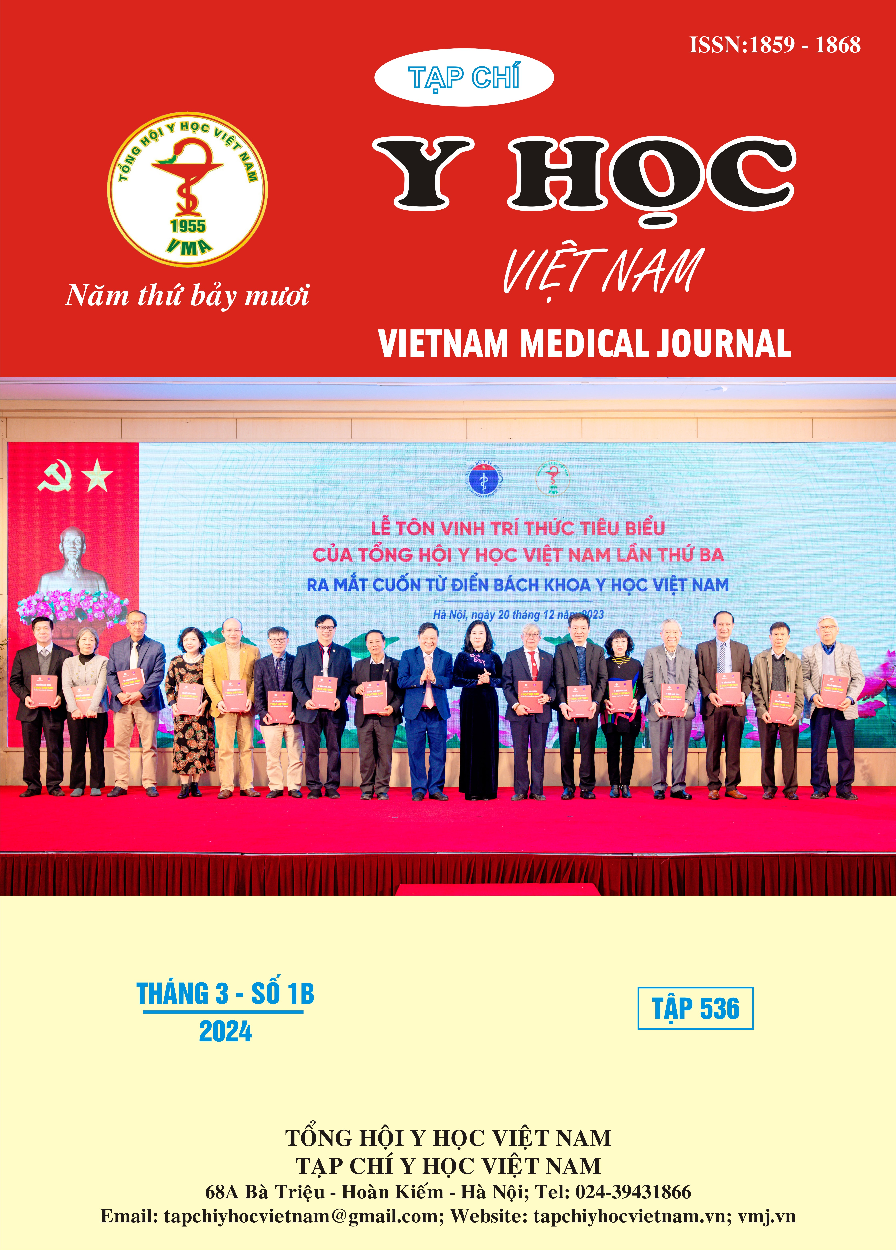CLINICAL EPIDEMIOLOGICAL CHARACTERISTICS, MICROBIOLOGICAL ETIOLOGY AND TREATMENT RESULTS OF PATIENTS WITH SEPSIS IN THE INTENSIVE CARE UNIT AT THE NATIONAL HOSPITAL OF TROPICAL DISEASES
Main Article Content
Abstract
Objective: describe clinical epidemiological characteristics, microbiological etiology and treatment results of patients with sepsis at the intensive care unit – the National hospital of Tropical diseases. Subjects & methods: A cross-sectional descriptive study was carried 75 patients diagnosed with sepsis treated at the intensive care unit - National hospital of Tropical diseases from 6/2017 to 6/2018. Results: The average age of patients in the study was 56.36 ± 17.18 years old, male/female ratio = 4/1. The average treatment stay at the ICU was 20 ± 16.7 days. SOFA score at admission to the ICU was 7.6 ± 3.6. There are 33.33% of patients with SOFA above 11 points when admitted to the ICU. Microbiological results: positive blood culture rate was 33.33%. Common causes are S. aureus 28%, S. suis 16%, E. coli 16%, S. pneumonia 16%, K. pneumonae 8%, A. baumanii 4%. Treatment results: mortality rate is 35.34%.
Article Details
References
2. Dellinger R.P, Levy M.M, Rhodes A, et al. 2013. "Surviving Sepsis Campaign: international guidelines for management of severe sepsis and septic shock, 2012." Intensive care medicine 39 (2013): 165-228.
3. Phạm Thị Ngọc Thảo. (2013). Nghiên cứu lâm sàng, cận lâm sàng và giá trị tiên lượng một số cytokin trên bệnh nhân nhiễm khuẩn huyết nặng. Đại học Y Dược TP Hồ Chí Minh.
4. Phạm Lưu Nhất Hoàng. (2011). Giá trị ba thang điểm APACHE II, LODS và SOFA trong tiên lượng tử vong đối với hội chứng nhiễm trùng toàn thân nặng và choáng nhiễm trùng, Luận văn Thạc sĩ, chuyên ngành Nội Tổng Quát. Đại học Y Dược Hồ Chí Minh.
5. Enrico C, Edul Vanina S K, Vazquez AR, et al. (2012). Systemic and microcirculatory effects of dobutamine in patients with septic shock. Journal of critical care. 27(6):630-638.
6. Esper AM and Martin GS. (2011). The impact of cormorbid conditions on critical illness. Critical care medicine. 39(12):2728-2735.
7. Bilevicius E, Dragosavac D, Dragosavac S, et al. (2001). Multiple organ failure in septic patients. Brazilian Journal of Infectious Diseases. 5(3):103-110.
8. Ngô Trung Dũng. (2013). Đánh giá vai trò độ bão hòa oxy máu tĩnh mạch trung tâm trong hướng dẫn điều trị bệnh nhân sốc nhiễm khuẩn. Luận văn thạc sỹ y học, . Trường Đại Học Y Hà Nội, Hà Nội.


